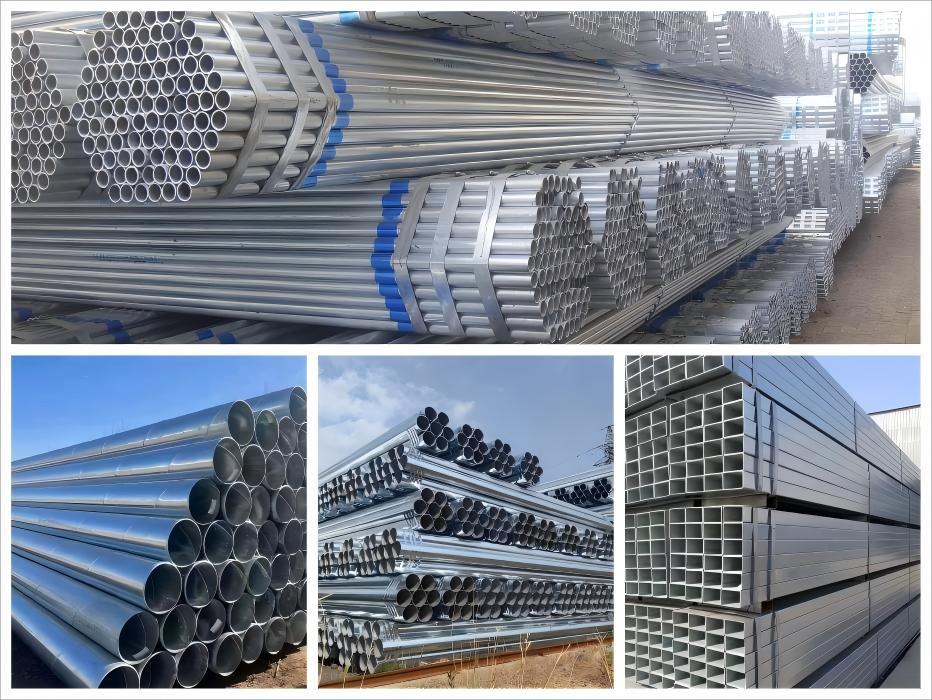Galvanized steel pipes Material Features & Key Differences
The DX-series grades are cold-rolled low-carbon steels primarily used for galvanizing. They differ mainly in their formability and suitability for specific processes like bending, deep drawing, or stamping.
All grades are typically galvanized with coating weights ranging from Z40 to Z275, depending on application requirements.
Applications of galvanized steel tubes
These galvanized steel tubes are widely used in:
Construction frameworks and guard rails
Greenhouse and irrigation systems
Automotive structural components
Electrical conduit and cable protection
Steel furniture and industrial racking
Their versatility, cost-effectiveness, and compatibility with forming processes make them a global favorite.

Production Process & Technology
The manufacturing of DX-series galvanized steel pipes involves several controlled stages:
Cold Rolling – Steel coils are reduced in thickness and smoothed for uniformity.
Pickling – Oxides are removed from the surface.
Hot-Dip Galvanizing – Pipes are immersed in molten zinc to apply anti-corrosion coating.
Cooling & Sizing – Steel pipes are cooled and shaped (round, square, rectangular).
Cutting & Inspection – Pipes are cut to length and undergo quality checks.
Packaging – Final products are bundled and prepared for shipment.
With ISO-certified plants and automated lines, Chinese manufacturers ensure consistency, fast delivery, and global-standard quality.
Related Posts
- ◉ China Supply of Q235 and Q345 Galvanized Steel Pipes for Structural and Industrial Applications
- ◉ Inside the Rise of DX51D–DX54D Galvanized Steel Pipes: Features, Applications & Manufacturing Insights
- ◉ High-Quality DX53D / DX54D Galvanized Steel Pipe
- ◉ Stainless Steel Pipes: Properties, Classification, and Applications
- ◉ Classification, characteristics and applications of stainless steel pipe fittings
Get in Touch
*We respect your confidentiality and all information are protected.
